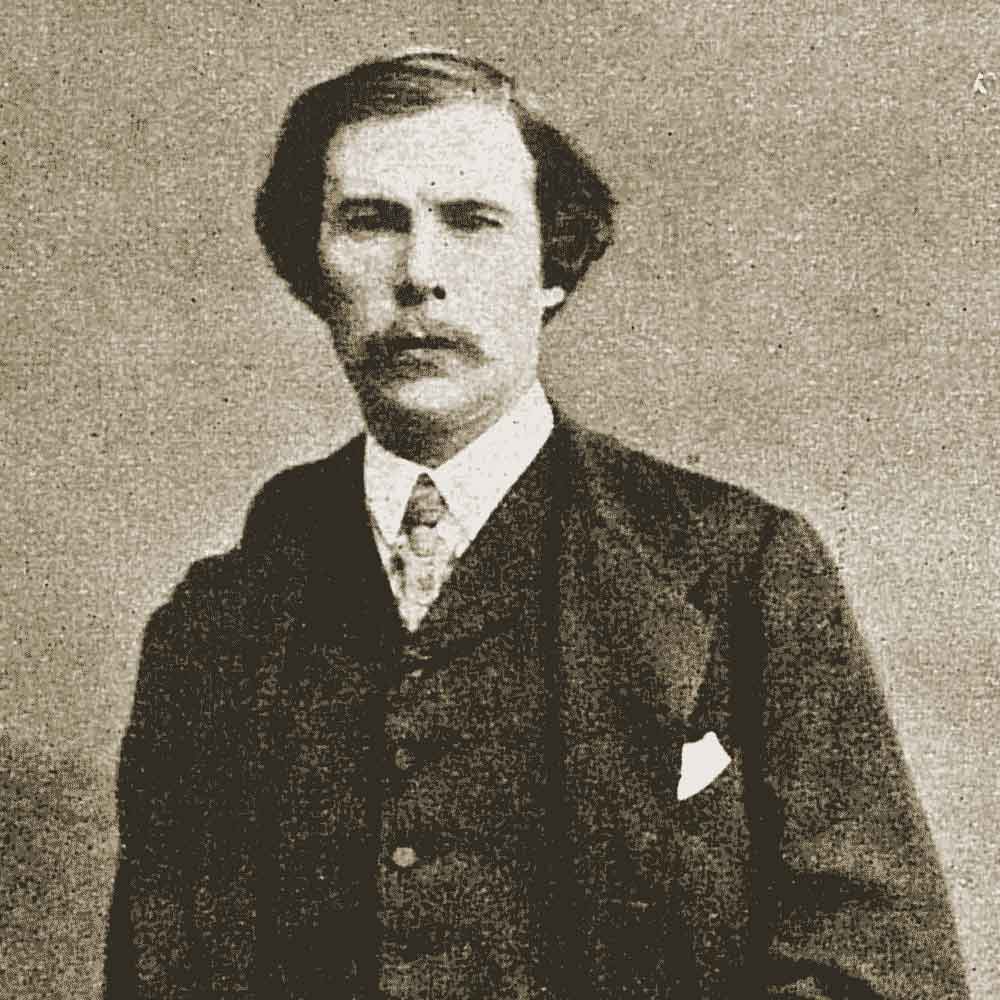
1882 – The Architectural Dream
Stephan Sarter was born the youngest son of a Bonn innkeeper in 1833. Following his apprenticeship at a bank and several stays abroad, he made his fortune by speculating on the stock exchange and, incidentally, helping to finance the Suez Canal. In 1882, he was ennobled by Duke Georg von Sachsen-Meiningen and, by 1882, Baron Stephan von Sarter had already laid the foundation stone for an imposing residence, namely, Schloss Drachenburg – a mixture of villa, mansion and castle. Two Düsseldorf-based architects, Leo von Abbema and Bernhard Tüshaus, drew up the original plans which were subsequently revised by Wilhelm Hoffmann, an architect resident in Paris and a former pupil of Ernst Friedrich Zwirner, a Cologne Cathedral architect. The historical architecture and splendid furnishings of Schloss Drachenburg were to find much admiration amongst contemporaries. Yet Sarter was never to live there. His chosen place of domicile was Paris where he died in 1902, still a bachelor, without having regulated his inheritance. Jakob Biesenbach, one of his nephews, bought the castle from the state.
1903 – Schloss Drachenburg as a Summer Resort
As a child, Jakob Biesenbach had experienced the foundation stone ceremony and lived in the nearby Hirschburg Castle for some time. A lawyer by profession, he decided that Schloss Drachenburg should now be developed as a tourist attraction and had the medieval Burghof (a castle farm which was then part of the overall property) demolished, replacing it in 1904 with a hotel built in the "Swiss style". In addition, Biesenbach also built some Nordic Summer Houses in the park for use as exclusive holiday apartments. Newly planted pine trees and a wildlife enclosure made for a suitably atmospheric backdrop. For its part, Schloss Drachenburg was transformed into a kind of community centre for the better-off: there was a restaurant in the basement; art objects were sold in the art gallery; and further rooms in the castle could be inspected for a small fee. Several series of postcards were on sale as souvenirs depicting interior and exterior views as well as mural painting details.
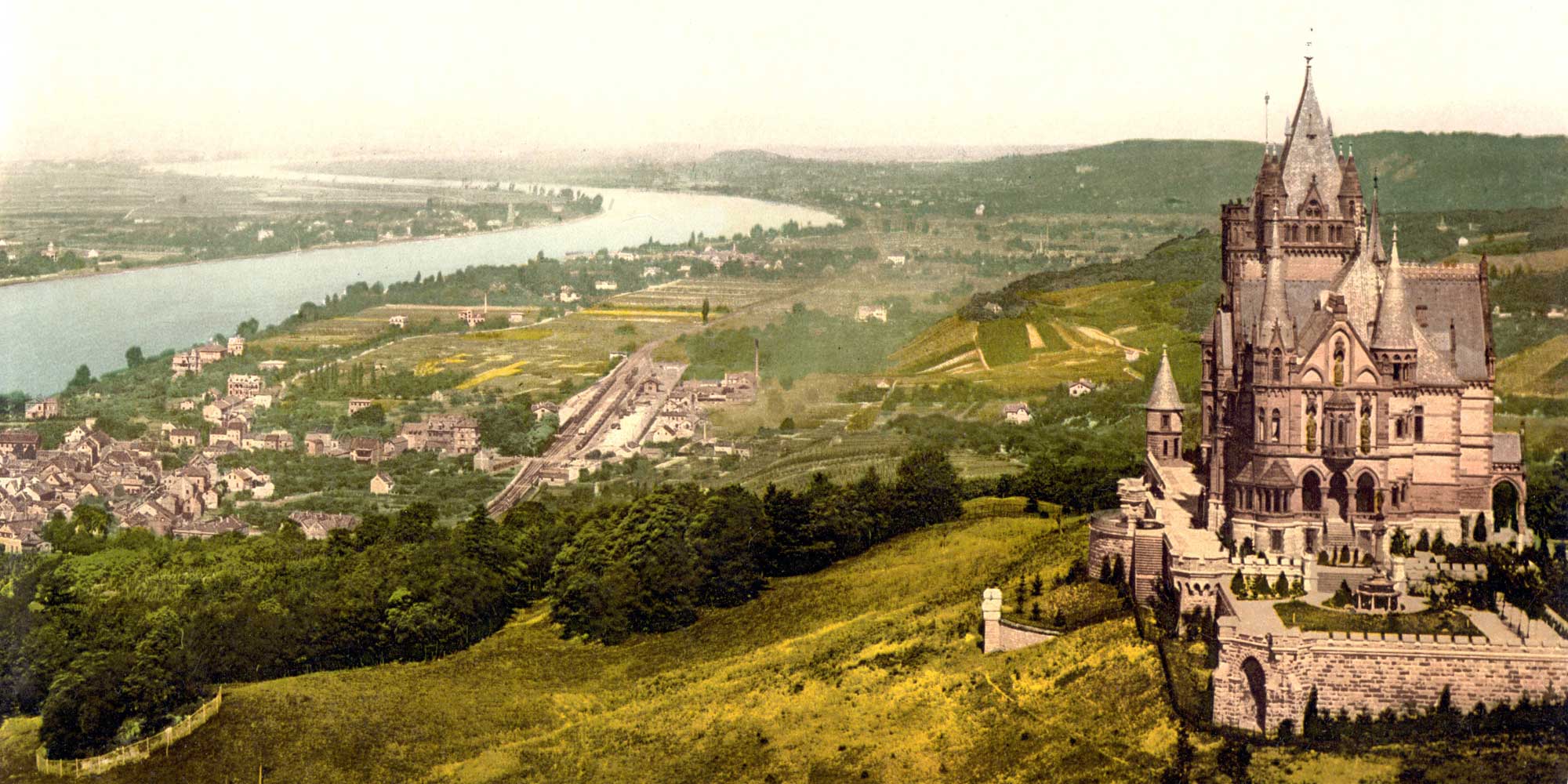
1910 – The Planned Amusement Park
In 1910, Biesenbach sold the property to Egbert von Simon, a retired cavalry captain, whose plans soon surpassed the mild touristic ambitions of his predecessor. The idea was that Schloss Drachenburg become a leisure park, pull in masses of visitors and turn into an economically attractive proposition. Von Simon planned a huge festival Theatre, a hotel building and a hangar for an airship that could be used for short pleasure flights. Ultimately, though, he was unable to finance these features. He arranged only garden and art exhibitions and run a nature theatre. In 1915, he fell during combat in the First World War.
1923 – The Social Commitment of an Industrialist
Hermann Flohr, who had previously lived as a tenant in the castle for some years, bought the Burghof by auction in 1921 and Schloss Drachenburg in 1923. The Cologne-based merchant and manufacturer placed several of the block houses at the disposal of the Women's Association of the German Red Cross for use as a convalescence home. In 1930 he decided to leave the entire property to a Catholic order. The interior furnishings was auctioned off and the Brothers of the Christian Schools, commonly known as the De La Salle Brothers, moved in a year later.
1931 – Christian Boys' Boarding School/Chapel in the Art Gallery
For the Order of the Brothers of the Christian Schools, Schloss Drachenburg was a perfect place to work educationally. Relatively cut off from the rest of the world, the Brothers opened a boys' boarding school known as St Michael's. Any figures on the property considered lewd – such as Venus on the eponymous terrace or the bacchantes in the tavern room – were either removed or covered up . Indeed, the Brothers transformed the former tavern into a sacristy and used the neo-Gothic Art Gallery as a chapel. Classrooms were accommodated in the castle building with dormitories for the pupils set up in the partly rebuilt block houses. Thus it was that, despite the tensions of the time, Schloss Drachenburg offered its inhabitants an almost idyllic living situation. In 1938, however, under increasing pressure from the National Socialists, St Michael's Boarding School for Boys had to close its doors.
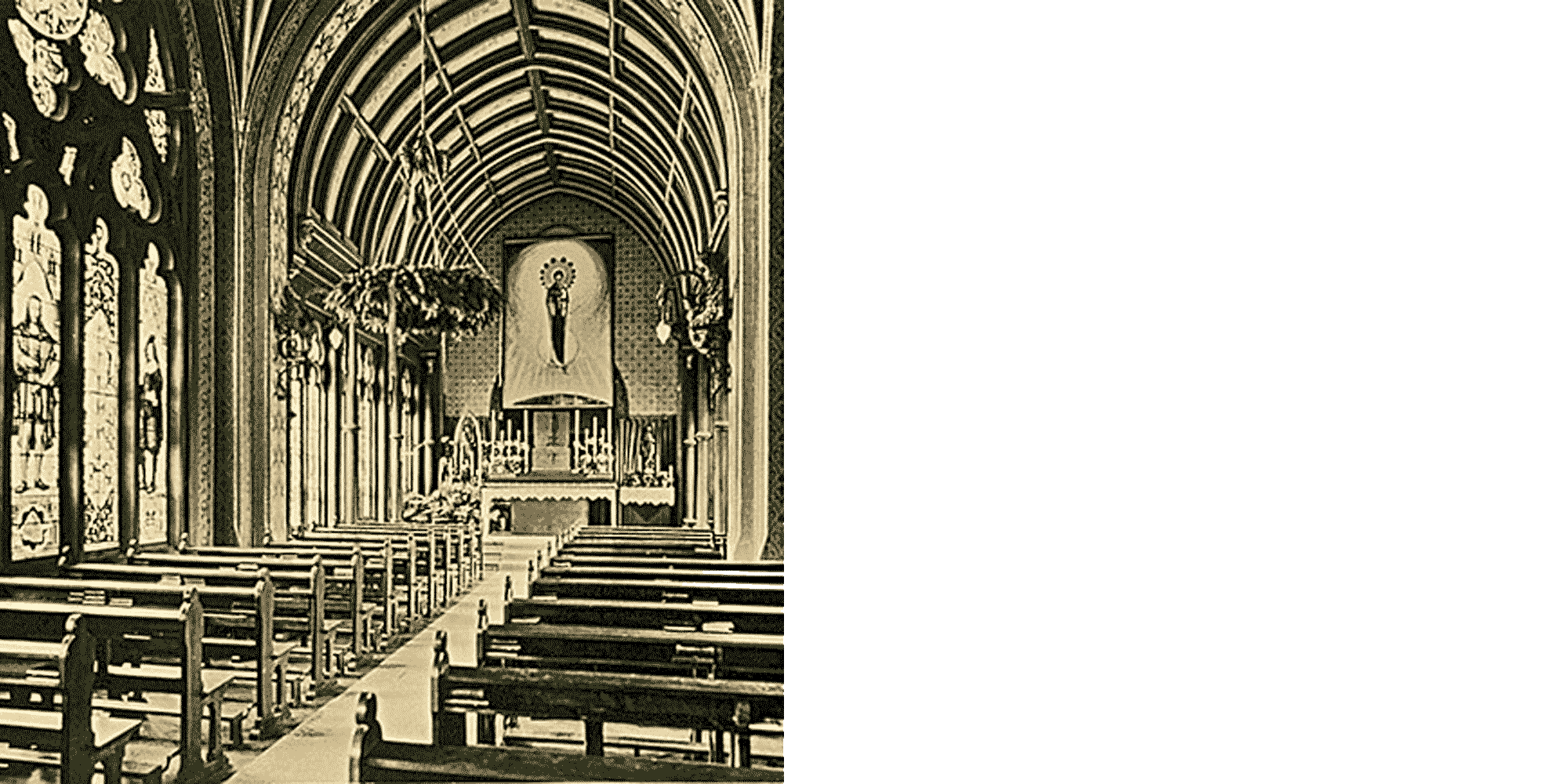
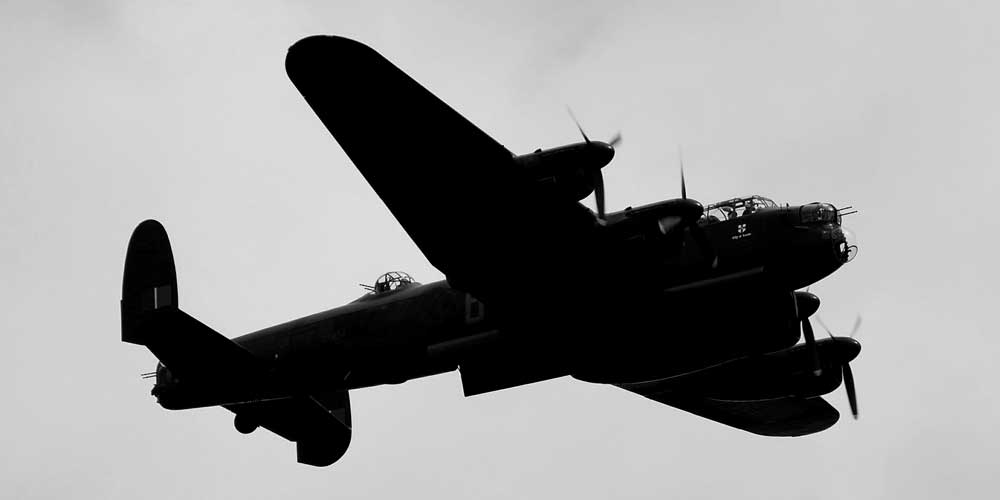
1942 – Destruction during the Second World War
The Adolf-Hitler-Schule (AHS 3) – a Nazi elite school – moved into Schloss Drachenburg in 1942. The most sustainable damage done to the building during this time was the destruction of the original Main Portal. Instead of the ornate double staircase that led to a gable-topped portico, the entrance vestibule was monumentalised by means of a broad set of stairs. The park also lost many of its landscape features due to the landfill utilised to position artillery. Added to which, the castle itself was bombarded – with nearly all the glass paintings being shattered and the Art Gallery heavily damaged in the process. On the side facing the Rhine, wind and rain could sweep in unhindered, thus causing the masonry to absorb damp. At the end of the war, US soldiers occupied the castle and afterwards it was commandeered as a refugee camp.
1947 – A Training Centre Brings New Life
It was a stroke of luck for Schloss Drachenburg that in 1947 the German Rail Regional Office based in Wuppertal realised that the property could be used as a training centre and took out rent. The Art Gallery was restored, its roof was renewed and the original glazed wall on the park side was bricked up so that the Rhine side could be repaired as well. A made-to-scale signal box enhanced lessons here in the largest room of the castle. Other rooms were also put to training use while the Principal had his office in the Niebelung Room. But by 1960, the German Rail authorities had transferred the training premises and left Schloss Drachenburg.
1971 – Decline and a New Beginning / the Spinat Era
For the next ten years, from 1960 to 1970, Schloss Drachenburg stood empty, visibly disintegrating. Although demolition as planned was prevented in 1963, it was not until 1971 that the property gained a new private owner – Paul Spinat, who had the complex maintained and refurbished. Young artists helped to freely reconstruct the missing mural paintings. In 1973, Spinat opened Schloss Drachenburg to the general public. Until his death in 1989, the eccentric castle-owner, about whom numerous stories abound, resided in the Drachenburg or in the Burghof.
1986 – Listed Monument and Restoration
Schloss Drachenburg was eventually listed as a monument in 1986. In 1989, urgent measures for full restoration were initiated by the North Rhine-Westphalia Foundation of Nature, Heritage & Culture. Since 1995, in close collaboration with the City of Königswinter, this NRW foundation has supervised the careful restoration of the castle complex. From 2003 to 2009, a dedicated exhibition entitled "Open Due to Restoration – a Look at the Building Site known as Schloss Drachenburg" has provided a wealth of information about the restoration process. And in early 2010, the rehabilitation work inside the castle was completed and all the restored and refurnished rooms again made accessible to visitors. The restoration of the landscape park was finished in 2011.


